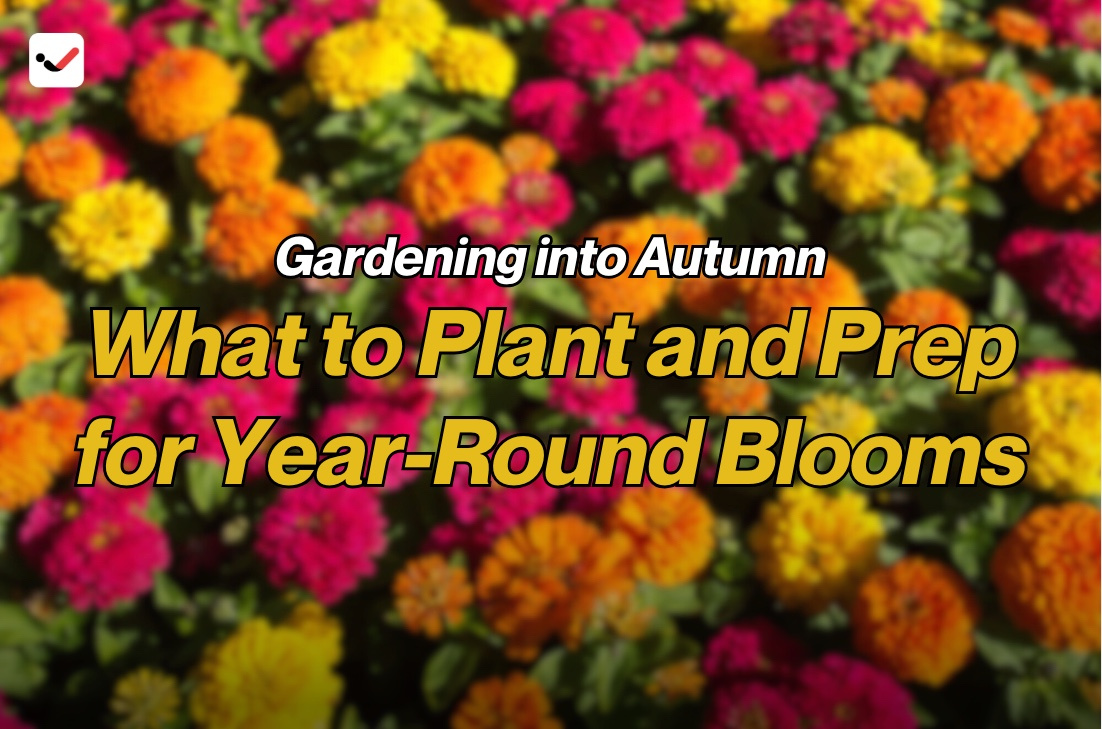Gardening into Autumn: What to Plant and Prep for Year-Round Blooms
Gardening into Autumn: What to Plant and Prep for Year-Round Blooms

As summer winds down, many people think the gardening season is over. But fall is actually one of the best times to keep your garden active, productive, and beautiful. The cooler weather, increased rainfall, and slower plant growth make it easier to prepare your garden for the months ahead. Whether you're growing flowers, vegetables, or herbs, fall gives you a second chance to plant and prepare.
Gardening in autumn is all about thinking ahead. By choosing the right plants and doing the right prep now, you can enjoy color in your garden year-round. Plus, healthy soil and well-tended beds in fall will give you a head start when spring comes around. Here’s how to get your garden in shape for a strong, blooming future—even when the days get shorter and the temperatures drop.
1. Why Autumn Gardening Matters
Autumn gardening sets the foundation for your garden’s success in spring and beyond. Fall soil is still warm from summer, which helps roots grow faster and stronger. Many plants also experience less stress in the cooler weather, allowing them to establish without battling intense heat.
When you garden in autumn, you improve your chances for year-round blooms. Plants have more time to root in and prepare for winter dormancy, which often leads to stronger growth and earlier flowers in spring. Fall is also an ideal time to divide perennials and plant new shrubs, giving your landscape a fresh, strong start.
2. Flowers to Plant in Autumn
If you want your garden to stay colorful through winter and burst back into bloom in spring, choose fall-friendly flowers. These hardy options thrive in cool weather and can handle a light frost.
Pansies and Violas: These small, cheerful flowers love cool temperatures and often bloom through early winter. They also come back in spring in many zones.
Chrysanthemums (Mums): A classic fall flower, mums bring bold color to borders and containers. Plant them early in fall so they can root before hard frost.
Asters: These late bloomers shine in autumn with purple, pink, and blue flowers that attract pollinators.
Snapdragons: Perfect for fall planting in mild climates, snapdragons often survive light frost and bloom again in spring.
Calendula: Known for their bright yellow and orange flowers, calendula can bloom well into winter in many regions.
Using fall flowers keeps your garden looking alive and supports pollinators before winter hits.
3. Spring-Blooming Bulbs to Plant Now
If you want spring flowers, plant your bulbs now. Autumn is the best time to plant bulbs because they need a cold period to bloom. Choose healthy, firm bulbs and plant them in well-drained soil.
Tulips
Daffodils
Hyacinths
Crocuses
Alliums
Planting bulbs in fall ensures they’ll bloom at the right time. To protect them from animals, cover the area with mulch or chicken wire after planting.
4. Vegetables to Plant in Autumn
Fall vegetable gardening can be just as rewarding as summer. Some vegetables grow better in cooler weather and taste sweeter after a frost.
Spinach: Fast-growing and cold-hardy, spinach can survive winter in many regions.
Kale: This leafy green thrives in fall and gets tastier with cold.
Radishes: Quick to grow and ready in a few weeks, radishes are perfect for fall planting.
Garlic: Plant garlic cloves in late fall for a harvest next summer.
Onions: Like garlic, onions need a long growing period and do best when planted in fall.
These fall vegetables help you make the most of your garden space and keep food growing longer into the year.
5. How to Prepare Your Garden for Winter
Autumn is the time to get your garden ready for colder months. Doing this prep now will save you time and effort later—and help your plants thrive year-round.
Clean Up: Remove dead or diseased plants to prevent pests and diseases from spreading.
Mulch: Add mulch to protect roots from temperature swings, hold in moisture, and stop weeds.
Compost: Start or add to your compost pile with fall leaves and garden waste. Healthy soil starts with organic matter.
Prune Smartly: Cut back some perennials, but leave seed heads on others like coneflowers to feed birds.
Water: Don’t stop watering just because it's cooler. Plants still need moisture as they settle in.
6. Tips for Year-Round Blooms
To enjoy blooms through all four seasons, you need a plan. Layer your garden with plants that bloom in different months. This way, as one fades, another starts.
Mix perennials and annuals for a steady wave of color.
Choose evergreen shrubs like boxwood or holly for winter interest.
Use containers so you can swap out seasonal plants easily.
Track your planting schedule and adjust each year based on what works.
Gardening for all seasons takes a little effort, but once it’s set up, it becomes a cycle of beauty and growth.
7. Tools and Supplies to Keep Handy
Having the right tools makes autumn gardening easier and faster.
Gloves: For handling mulch, soil, and prickly plants.
Trowel and spade: For digging and planting bulbs or vegetables.
Pruners: To trim dead growth and shape shrubs.
Rake: For clearing leaves and prepping beds.
Watering can or hose: Keep watering until the ground freezes.
8. Gardening by Zone: Know Your Timing
Your planting schedule depends on your USDA hardiness zone. In warmer zones (8–10), fall planting can stretch well into November. In colder areas (zones 3–6), aim to finish planting by mid-October.
Search your local planting calendar to stay on track. This will help you avoid planting too late and give your plants time to establish roots.
Autumn gardening is more than cleanup—it's an opportunity. By choosing the right fall flowers, vegetables, and spring bulbs, and prepping your garden properly, you can keep it healthy and colorful all year long. A little work now pays off big when everything wakes up again in spring.
Don’t let the cooler temperatures fool you. Fall is the perfect season to plant, prepare, and plan. With the right steps, you can enjoy year-round blooms and a stronger, more beautiful garden.

